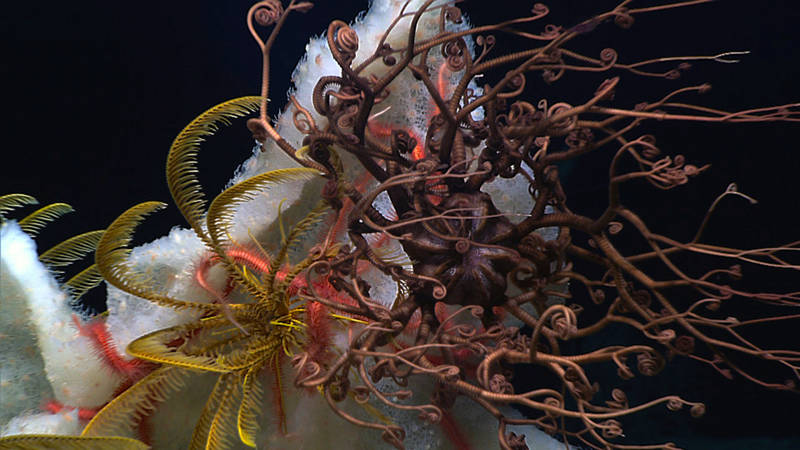Dive 14 was conducted today on a ridge that extends northward from Pioneer Bank to determine whether ridge topography is suitable habitat for high-density communities of corals and sponges. The depth of this dive was closer to the oxygen minimum zone, so we were also interested in detecting any effects of a lower oxygen environment on the communities. The dive started at 1,644 meters on a sloped surface consisting of manganese-crusted cobble and boulders overlaying sediment with a relatively low density of animals, but diverse assemblage of corals and sponges. As the ROV transited towards the flank of the ridge, the density of animals increased and the assemblage was dominated by the sponge Walteria cf. leuckarti and chrysogorgid corals (both Chrysogorgia sp. and Iridogorgia sp.). These groups remained dominant as the ROV moved along the crest of the ridge for the remainder of the dive. As the ROV continued moving along the crest of the ridge, it became evident that the corals and sponges were aggregated along the crest and upper flanks of the ridge. The ROV left the bottom at a depth of 1,535 meters after a total bottom time of more than six hours.
